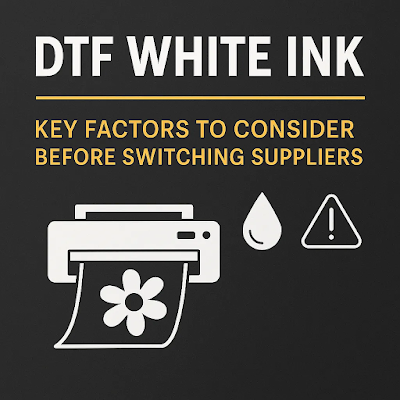Can I Print DTF on My Sublimation Printer?
As the world of custom printing continues to expand, many enthusiasts and professionals are exploring various printing techniques to enhance their projects. One such technique gaining popularity is Direct to Film (DTF) printing. This method has captured the attention of many who are already familiar with sublimation printing. However, a common question arises: Can I print DTF on my sublimation printer?
Understanding the Basics: DTF vs. Sublimation Printing
Before delving into the compatibility between DTF and sublimation printers, it’s essential to understand the differences between the two printing methods.
Sublimation Printing
Sublimation printing involves transferring dye onto materials like polyester and polyester-coated substrates. It uses heat to convert the dye into a gas, which then permeates the fabric and solidifies upon cooling. This method produces vibrant, long-lasting prints but is limited to specific materials, primarily those with a high polyester content.
Also Read: 6 Common Sublimation Issues & How to Fix Them
DTF Printing
DTF printing, on the other hand, utilizes a unique process where designs are printed onto a special film and then coated with an adhesive powder. After curing, this film is transferred onto the garment using a heat press. This technique allows for printing on various fabrics, including cotton and blends, offering versatility and durability. For those interested in this printing method, investing in a DTF Printer can open new possibilities in garment customization.
The Question of Compatibility
Can You Use a Sublimation Printer for DTF?
The short answer is no; you cannot print DTF directly on a sublimation printer. Here’s why:
Printer Technology: Sublimation printers are designed to handle dye sublimation inks, which are entirely different from the inks used in DTF printing. DTF inks are formulated to adhere to the film and later transfer to the fabric using heat, while sublimation inks are meant to convert to gas and bond with polyester fibers.
Printing Process: DTF printing involves a unique process that includes a film transfer method and an adhesive application. Sublimation printers lack the necessary components to handle these additional steps.
Material Compatibility: DTF printing can be used on a broader range of materials, while sublimation printing is primarily limited to polyester and specific coatings. Using a sublimation printer would restrict your options and not yield the desired results.
Also Read: Everything you need to know: Heat Transfer Designs Wholesale
Alternative Solutions
If you're interested in DTF printing but currently own a sublimation printer, consider the following options:
Invest in a DTF Printer: For those serious about expanding their printing capabilities, investing in a dedicated DTF Printer may be worthwhile. These printers are specifically designed for the DTF process and can deliver high-quality results on various materials.
Hybrid Solutions: Some businesses use both sublimation and DTF printing to cover a wider range of applications. This approach allows you to take advantage of the benefits of each printing method while ensuring you have the right tools for each job.
Explore Other Techniques: Depending on your specific needs, other printing methods like screen printing, heat transfer vinyl, or even direct-to-garment (DTG) printing may suit your projects better.
Conclusion
In summary, while sublimation printers and DTF Printers serve different purposes in the world of custom printing, they cannot be used interchangeably. If you're looking to venture into DTF printing, it’s best to invest in a dedicated DTF Printer. Understanding the strengths and limitations of each printing technique will help you make informed decisions for your printing needs, ultimately leading to better results and a more satisfying printing experience.




Comments
Post a Comment